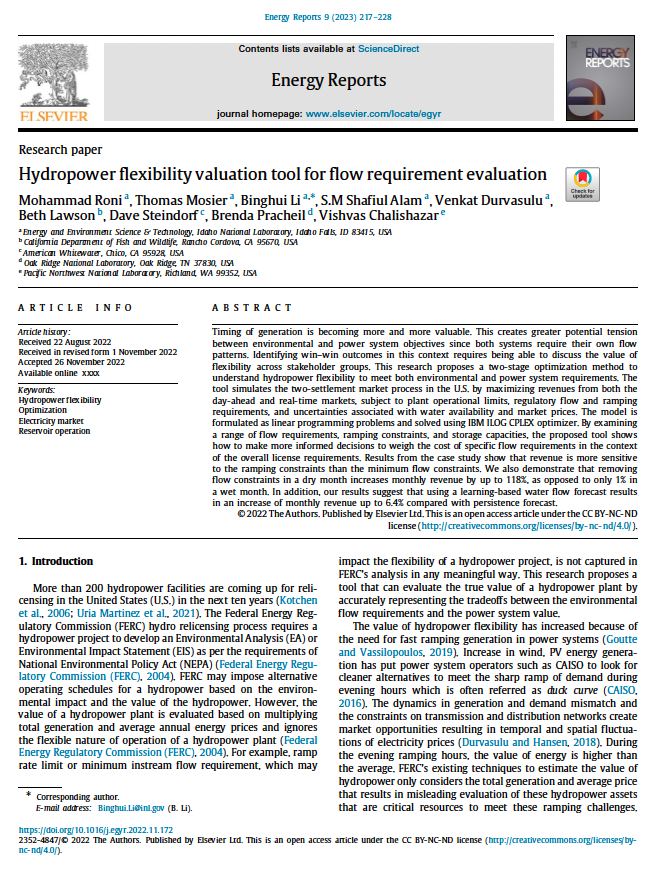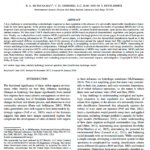Highlights
- Examined value of hydropower flow flexibility using a two-stage optimization method.
- Revenue is more sensitive to ramping constraints than minimum flow constraints.
- Demonstrated the impacts of hydropower plant configuration changes on revenue.
- Evaluated instream flow forecasting method to understand revenue difference.
Abstract
Timing of generation is becoming more and more valuable. This creates greater potential tension between environmental and power system objectives since both systems require their own flow patterns. Identifying win–win outcomes in this context requires being able to discuss the value of flexibility across stakeholder groups. This research proposes a two-stage optimization method to understand hydropower flexibility to meet both environmental and power system requirements. The tool simulates the two-settlement market process in the U.S. by maximizing revenues from both the day-ahead and real-time markets, subject to plant operational limits, regulatory flow and ramping requirements, and uncertainties associated with water availability and market prices. The model is formulated as linear programming problems and solved using IBM ILOG CPLEX optimizer. By examining a range of flow requirements, ramping constraints, and storage capacities, the proposed tool shows how to make more informed decisions to weigh the cost of specific flow requirements in the context of the overall license requirements. Results from the case study show that revenue is more sensitive to the ramping constraints than the minimum flow constraints. We also demonstrate that removing flow constraints in a dry month increases monthly revenue by up to 118%, as opposed to only 1% in a wet month. In addition, our results suggest that using a learning-based water flow forecast results in an increase of monthly revenue up to 6.4% compared with persistence forecast.
Authors
Mohammad Roni, Thomas Mosier, Binghui Li, S.M Shafiul Alam, Venkat Durvasulu, Beth Lawson, Dave Steindorf, Brenda Pracheil, Vishvas Chalishazar


 HRC or member-contributed
HRC or member-contributed